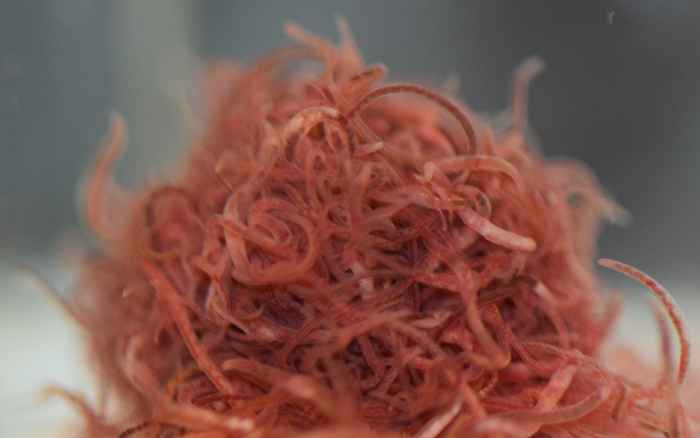Worms in a maze
13 June 2022
When the Covid lockdown started, Tess moved her setup and turned her own apartment into a personal laboratory for two weeks to finish the research. She and her colleagues wrote an article about the results that was published in Science Advances last week.
Aquarium store
Physicists describe large collections of particles like atoms or molecules using statistical mechanics. That theory can be used to predict the macroscopic behaviour of such collections very precisely. For example, the specific heat of a liquid – the amount of energy needed to heat up the liquid by a single degree – can be computed from the properties of the molecules that constitute the liquid. For particles that, contrary to atoms and molecules, can generate their own kinetic energy, a theory does not yet exist. Having such a theory would be very valuable, because it is believed that much of the collective behaviour in nature (that of colonies of bacteria or ants, schools of fish, flocks of birds) can be described as active matter as well.

For the development of a theory, experiments on well-characterized active matter are essential. A first step in that process is to make sure that the particles under investigation display the same, well-defined activity. But what if the mix consists of particles of varying activity? Researchers at the Van ‘t Hoff Institute for Molecular Sciences and the Institute of Physics came up with a solution: chromatography. This classical method from chemistry turns out to also work for active matter. Bachelor student Tess Heeremans performed the experiments in which the ‘active particles’ were Tubifex-worms. These were initially bought in an aquarium store (where they are sold as fish food), and afterwards home-grown.
Worms in a maze
In chromatography, one usually allows mixtures of molecules to flow through a column filled with a porous material. The better the molecules attach to the porous material, the longer it takes them to emerge from the column, allowing for the separation of mixtures of different types of molecules. Surprisingly, for the case of active worms, the chromatography approach also turned out to work: when worms in water flow through a maze structure, the active worms emerge much faster than the slower ones. The activity of the worms was tuned by placing them temporarily in a 3 to 5% ethanol solution before the experiment – in effect, they were fed drunk for the sake of the experiment.

Tess designed and built the chromatography setup herself, and became a familiar face in the UvA Technology Center. When the Covid lockdown started, she arranged for a van and together with some friends moved the entire setup to het student apartment, where she finished the experiments. In her article that appeared last week, this amusing detail of the story is not mentioned, but Tess does mention the aquarium store in the Javastraat, who are kindly acknowledged for their contribution to the experiments.
Publication
Tess Heeremans, Antoine Deblais, Daniel Bonn, Sander Woutersen, "Chromatographic separation of active polymer–like worm mixtures by contour length and activity", Sci. Adv. 8, eabj7918 (2022) DOI: 10.1126/sciadv.abj7918